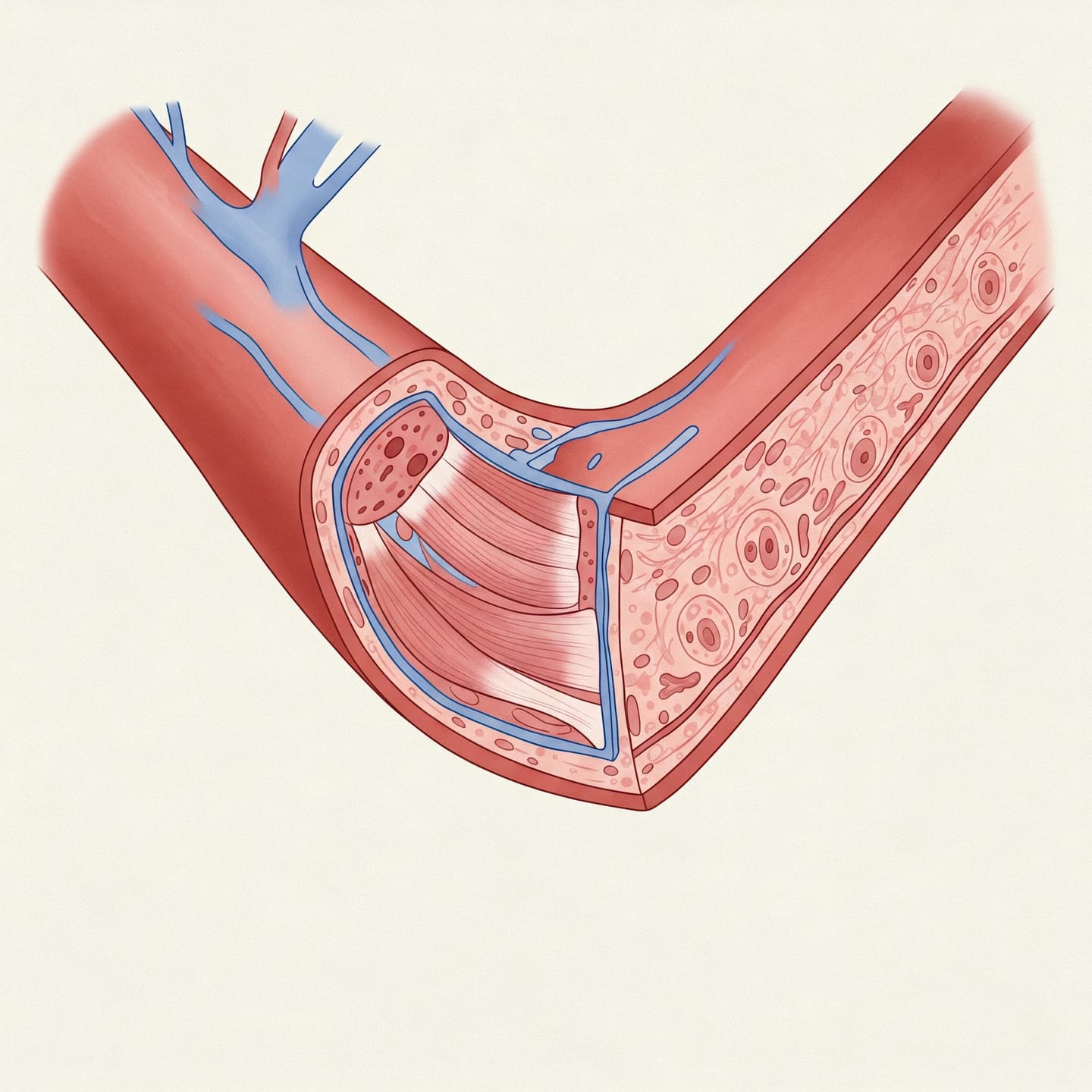Lipid optimization is a cornerstone of enhancing healthspan and mitigating long-term cardiovascular risk. My own journey involves applying evidence-based strategies, recently focusing on refining my lipid profile. While not alarming, my baseline numbers weren't yet optimal according to my long-term health goals, specifically concerning LDL cholesterol (LDL-C) and Apolipoprotein B (ApoB).
The Critical Role of LDL & ApoB
Understanding why LDL-C and ApoB matter is crucial for proactive health management:
- LDL-C (Low-Density Lipoprotein Cholesterol): Commonly termed "bad" cholesterol, LDL particles transport cholesterol within the body. However, elevated levels are causally linked to the development of arterial plaque (atherosclerosis) – the foundation of most cardiovascular events. While specific targets remain debated, a clear trend exists towards more aggressive LDL-C lowering (often <70 mg/dL or even lower) for robust, long-term prevention.
- ApoB (Apolipoprotein B): This protein is integral to every atherogenic lipoprotein particle (including LDL, VLDL, IDL). Essentially, measuring ApoB provides a direct count of these potentially harmful particles. ApoB is increasingly recognized by experts as a superior metric for cardiovascular risk assessment compared to LDL-C alone, as it encapsulates the total atherogenic burden. Driving down ApoB is a primary objective in longevity-focused cardiovascular strategies.
The Experiment: Assessing Ezetimibe 10mg Monotherapy
While statins are the standard first-line therapy and a valuable tool, the objective here was to assess the efficacy of a non-statin approach – Ezetimibe 10mg – as monotherapy. Evaluating the response to a single agent provides valuable baseline information. Other potent options like Nexlizet (bempedoic acid + ezetimibe) were considered, but cost and access hurdles made them less feasible starting points for this trial.
For 30 days, I administered 10mg of Ezetimibe daily. To isolate the drug's effect as cleanly as possible, diet and exercise were deliberately held constant.
Ezetimibe's Mechanism of Action:
Ezetimibe functions by selectively inhibiting cholesterol absorption in the small intestine via the NPC1L1 transporter. This reduces the influx of dietary and biliary cholesterol into circulation. Its mechanism contrasts sharply with statins, which primarily inhibit cholesterol synthesis in the liver (via HMG-CoA reductase). This distinction is relevant, as individuals termed "hyperabsorbers" – those who absorb a higher fraction of intestinal cholesterol – often exhibit enhanced responses to Ezetimibe.
Baseline Data:
- LDL: 99 mg/dL
- HDL: 69 mg/dL
- Triglycerides: 64 mg/dL
- ApoB: 82 mg/dL
Results After 30 Days on Ezetimibe 10mg:
- LDL: 73 mg/dL (-26.3%)
- HDL: 73 mg/dL (+5.8%)
- Triglycerides: 46 mg/dL (-28.1%)
- ApoB: 68 mg/dL (-17.1%)
Data Interpretation:
The results demonstrate a clear pharmacologic effect:
- ApoB Reduction (-17.1%): This falls within the expected range for Ezetimibe monotherapy.
- LDL Reduction (-26.3%): A robust response, stronger than the average often cited (~15-25%), suggesting that inhibiting absorption significantly impacts my lipid levels – potentially indicating a hyperabsorber phenotype.
- Triglyceride Reduction (-28.1%): A notable decrease that was unexpected based on research findings. I believe there may be confounding factors in play for this decrease.
- HDL Increase (+5.8%): A modest, directionally positive change.
Next Steps: Strategic Optimization
While the Ezetimibe monotherapy yielded significant improvements, achieving truly optimal long-term cardiovascular protection likely requires driving LDL and ApoB levels lower still. While potent (and higher cost) options like PCSK9 inhibitors exist, the next logical step involves exploring cost-effective combination therapy.
The plan is to evaluate the addition of low-dose rosuvastatin (e.g., 5mg) to the current Ezetimibe regimen. Statins (targeting production) and Ezetimibe (targeting absorption) offer synergistic effects, often achieving greater LDL/ApoB lowering together than either agent alone, even at low doses. This combination represents an evidence-based approach to further optimization, with careful monitoring for tolerance and efficacy.
Continuing Ezetimibe is clearly indicated based on this initial trial – it's well-tolerated and demonstrably effective in my case. Further updates on the combination therapy phase will follow. Sharing this n=1 data contributes to the broader understanding of personalized lipid management strategies within the health optimization community.
Sources:
1. https://pmc.ncbi.nlm.nih.gov/articles/PMC5298356/
2. https://pmc.ncbi.nlm.nih.gov/articles/PMC2694344/

